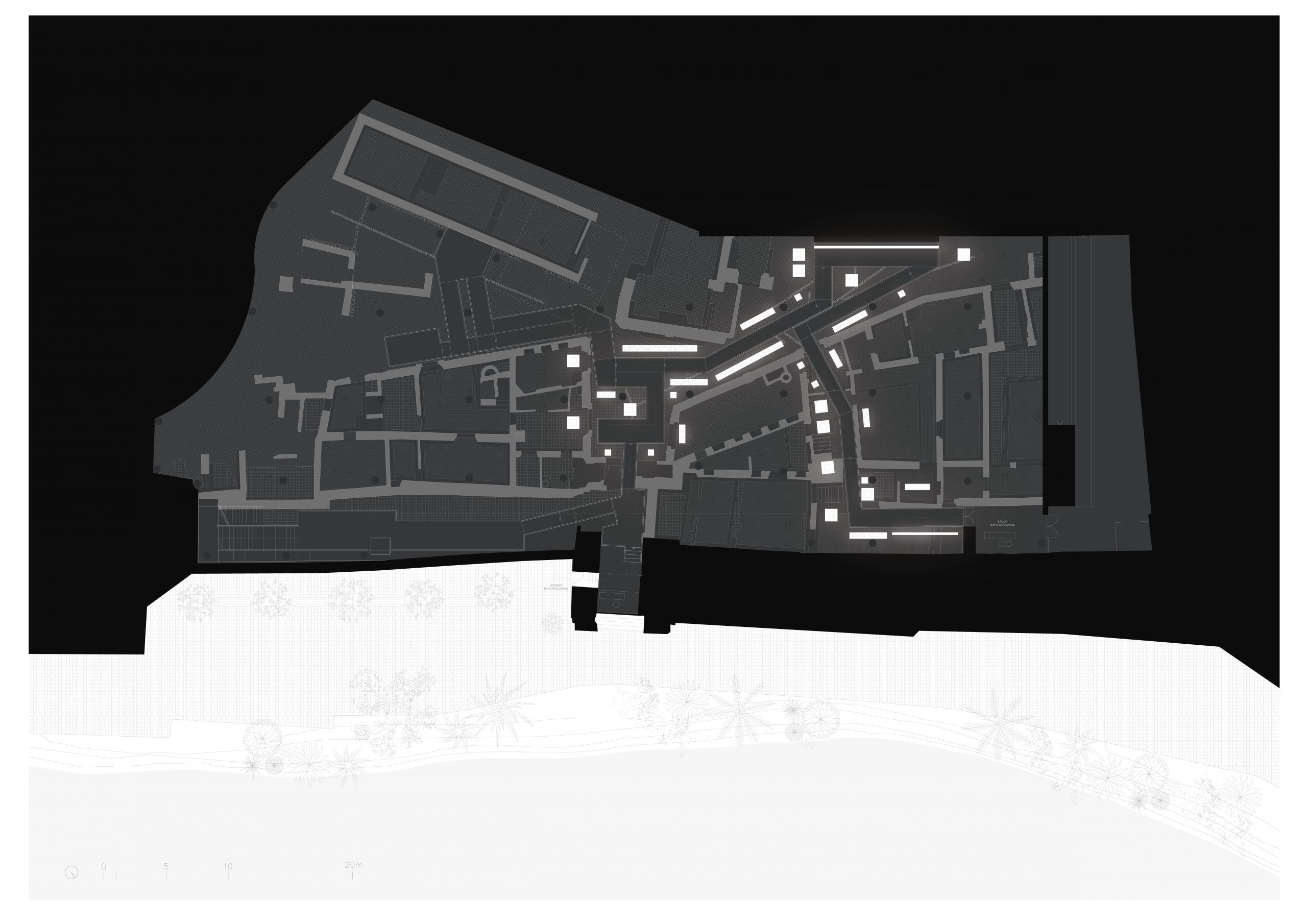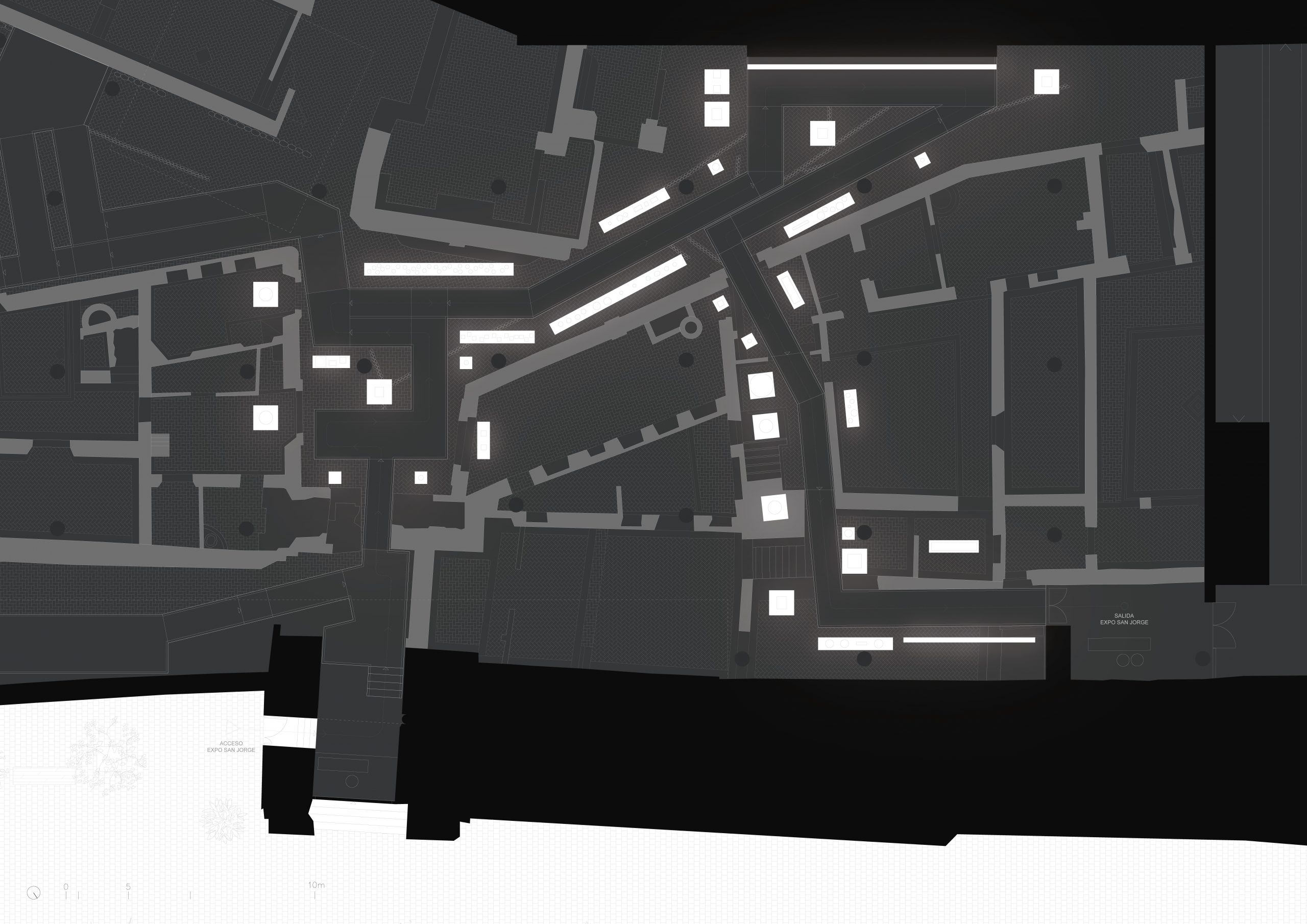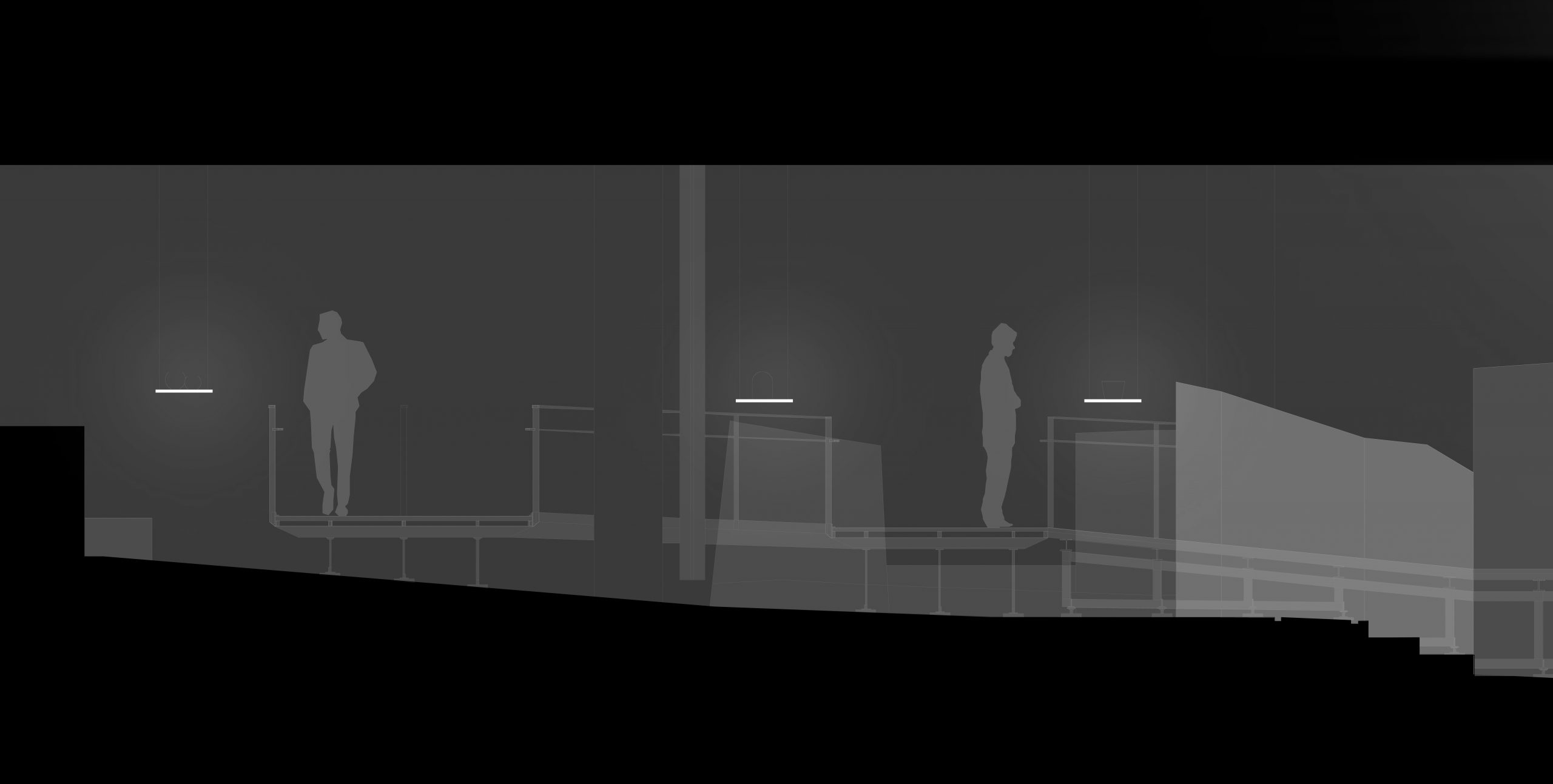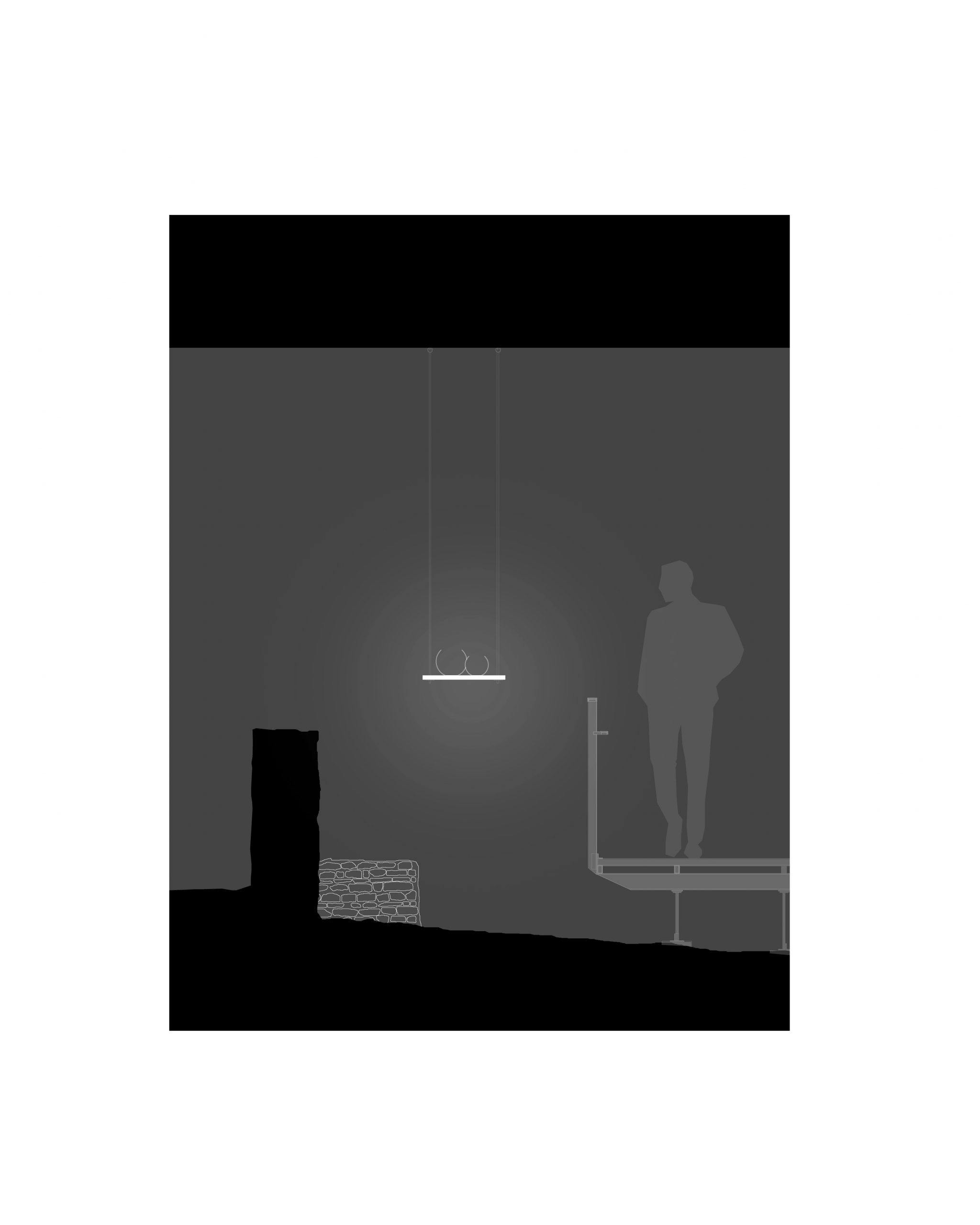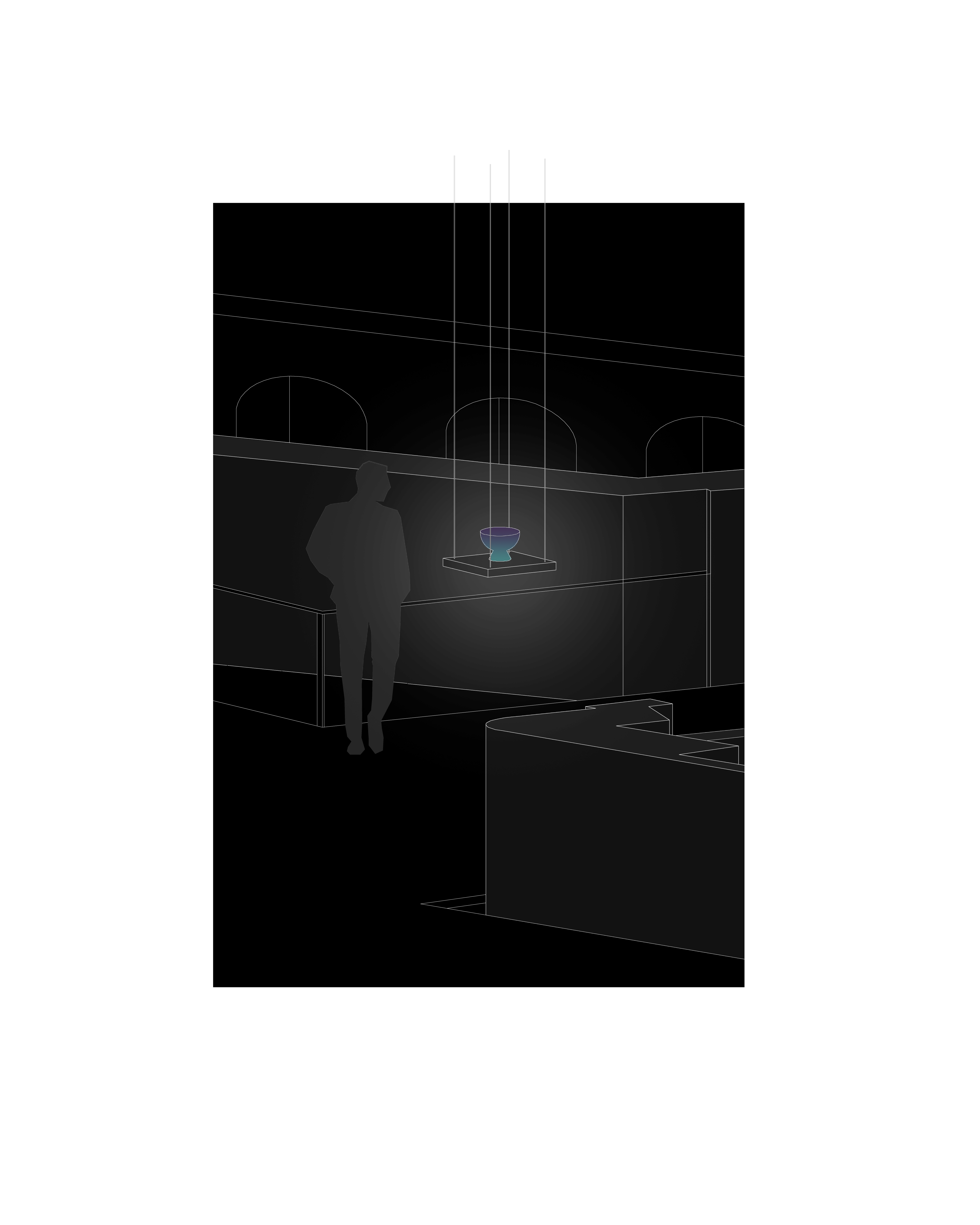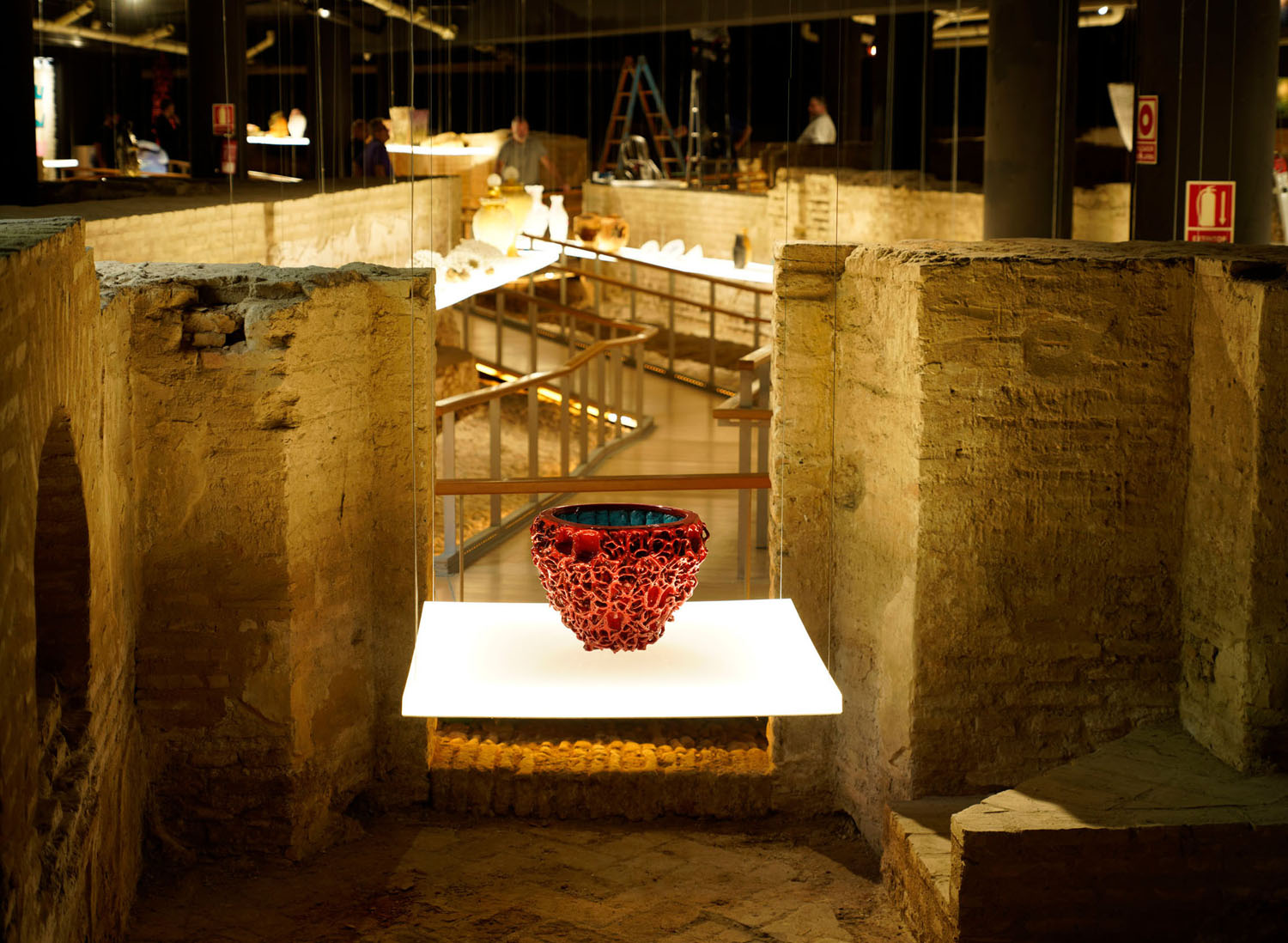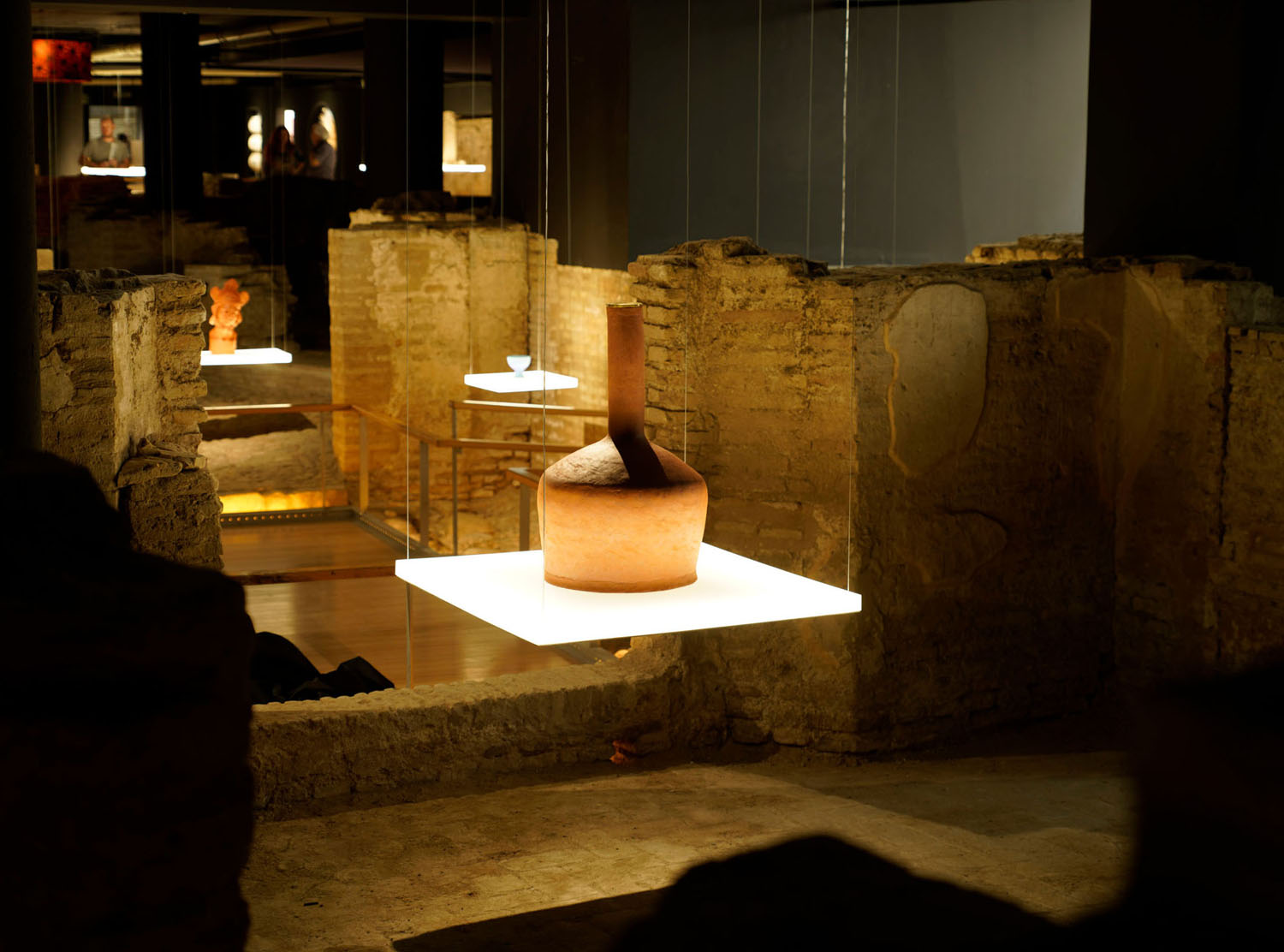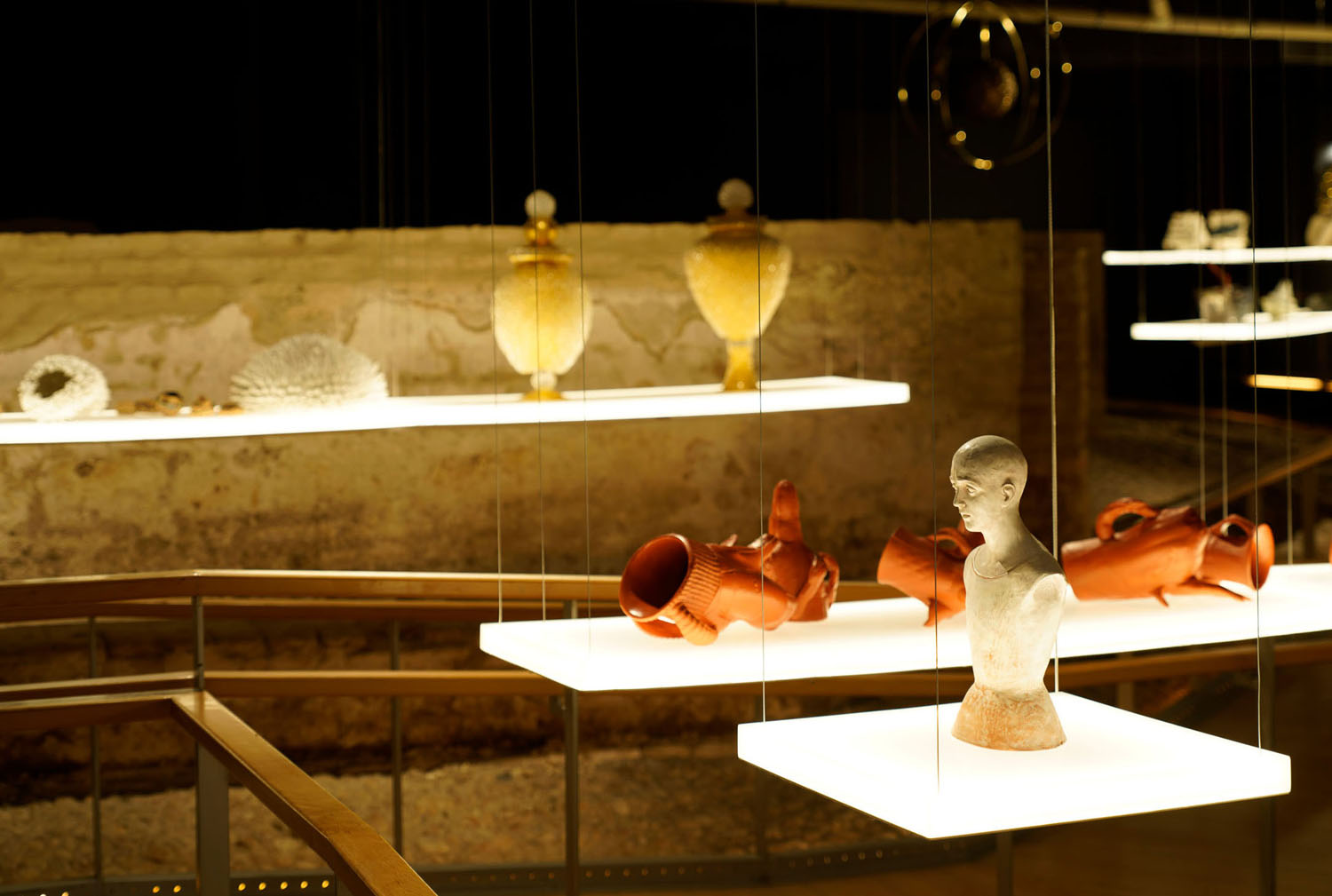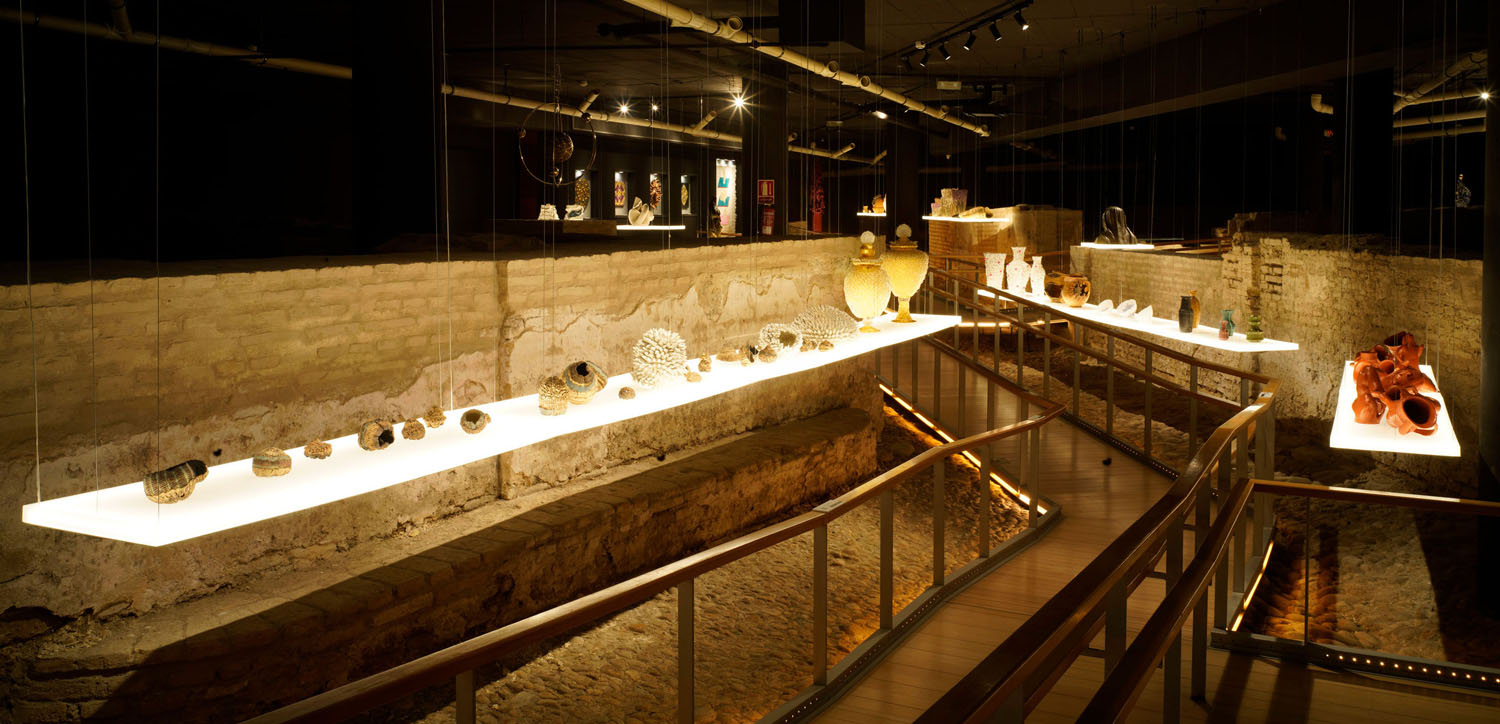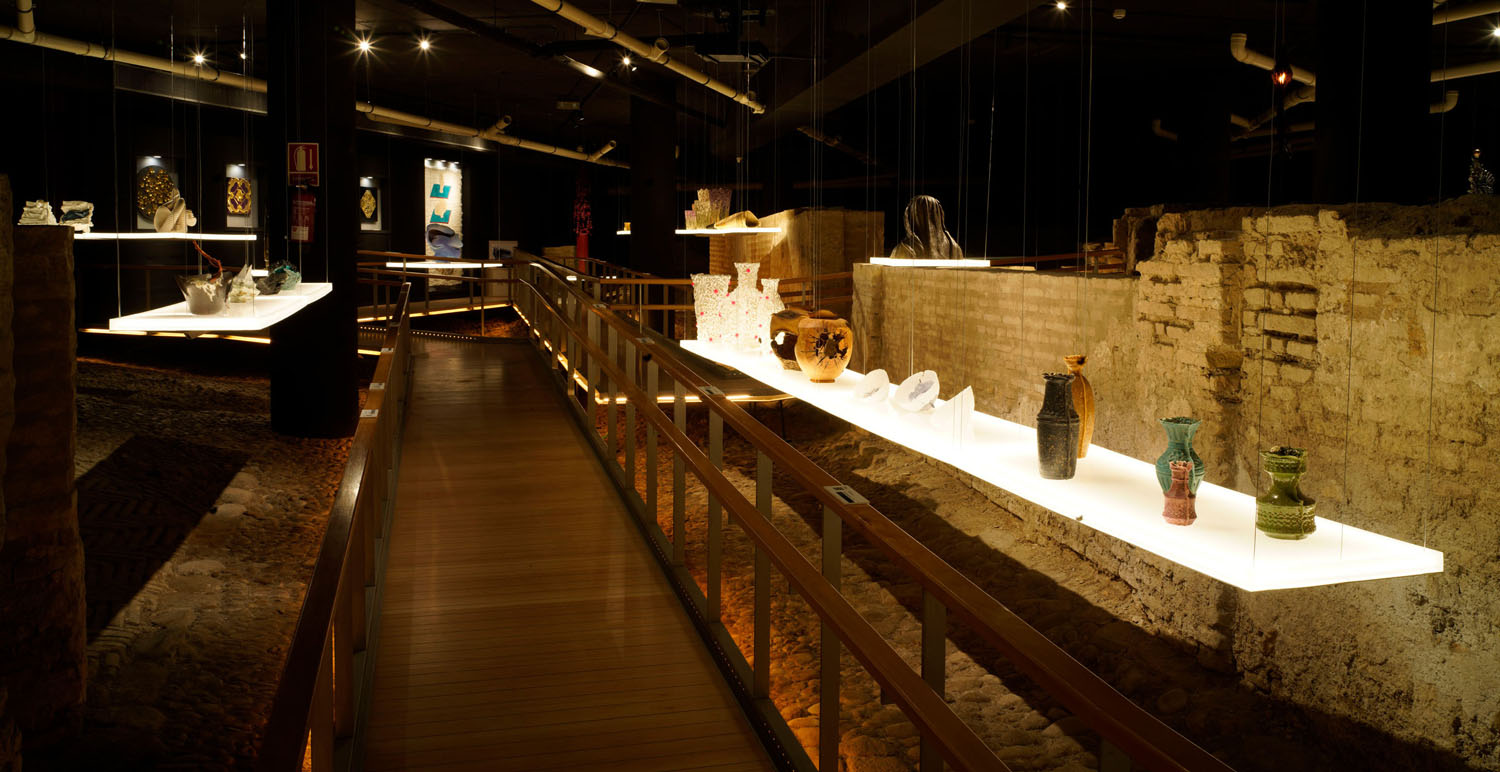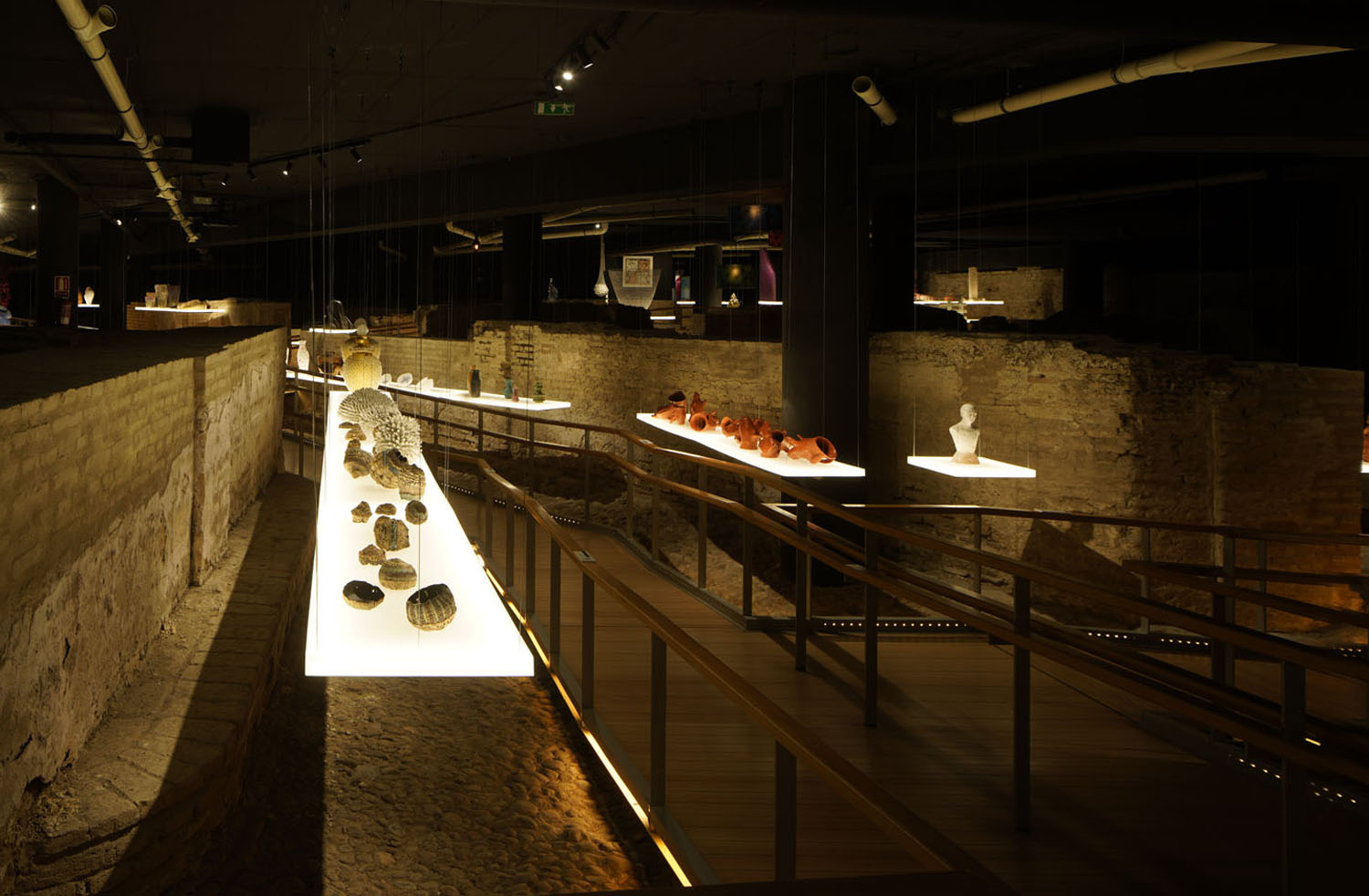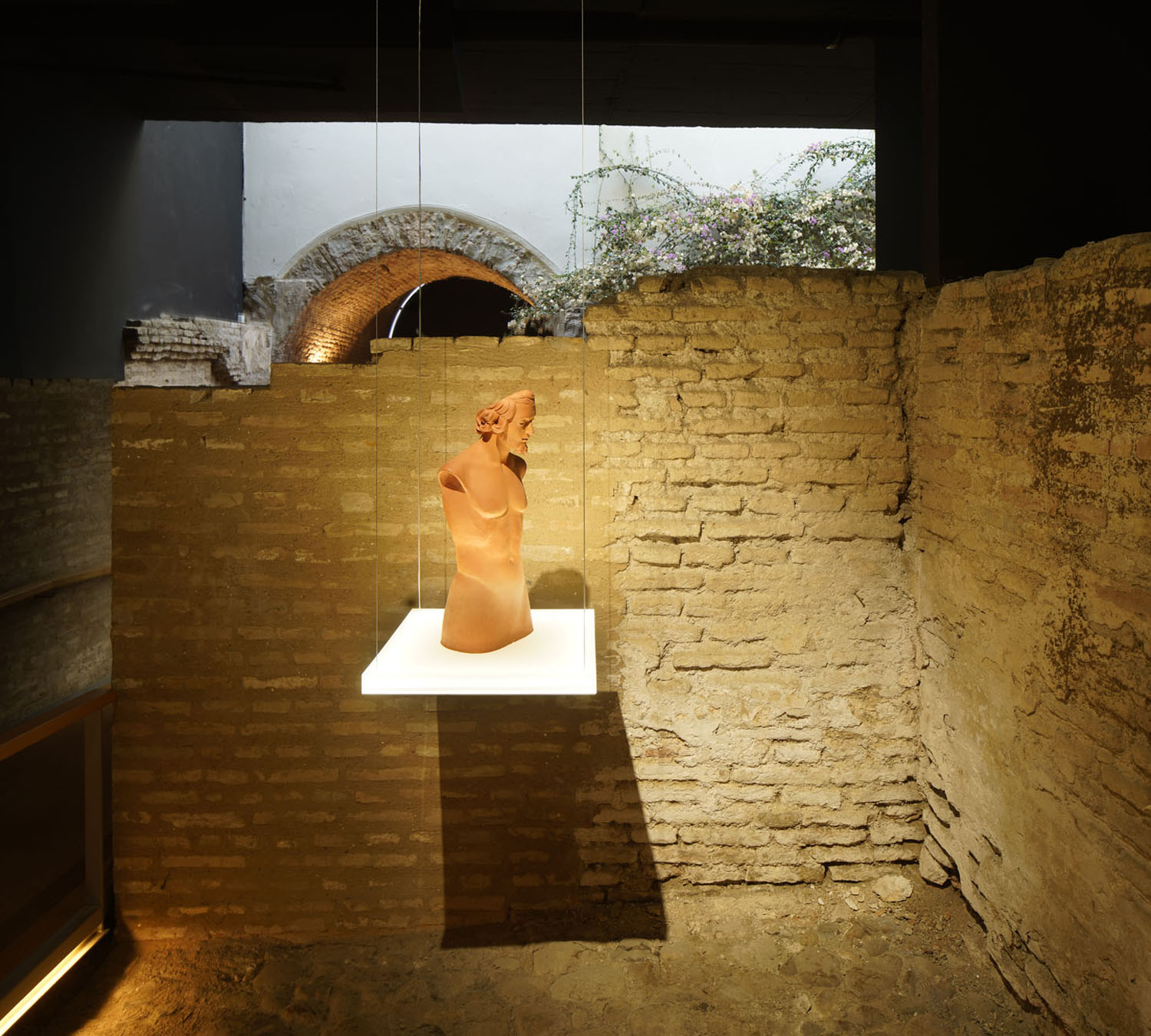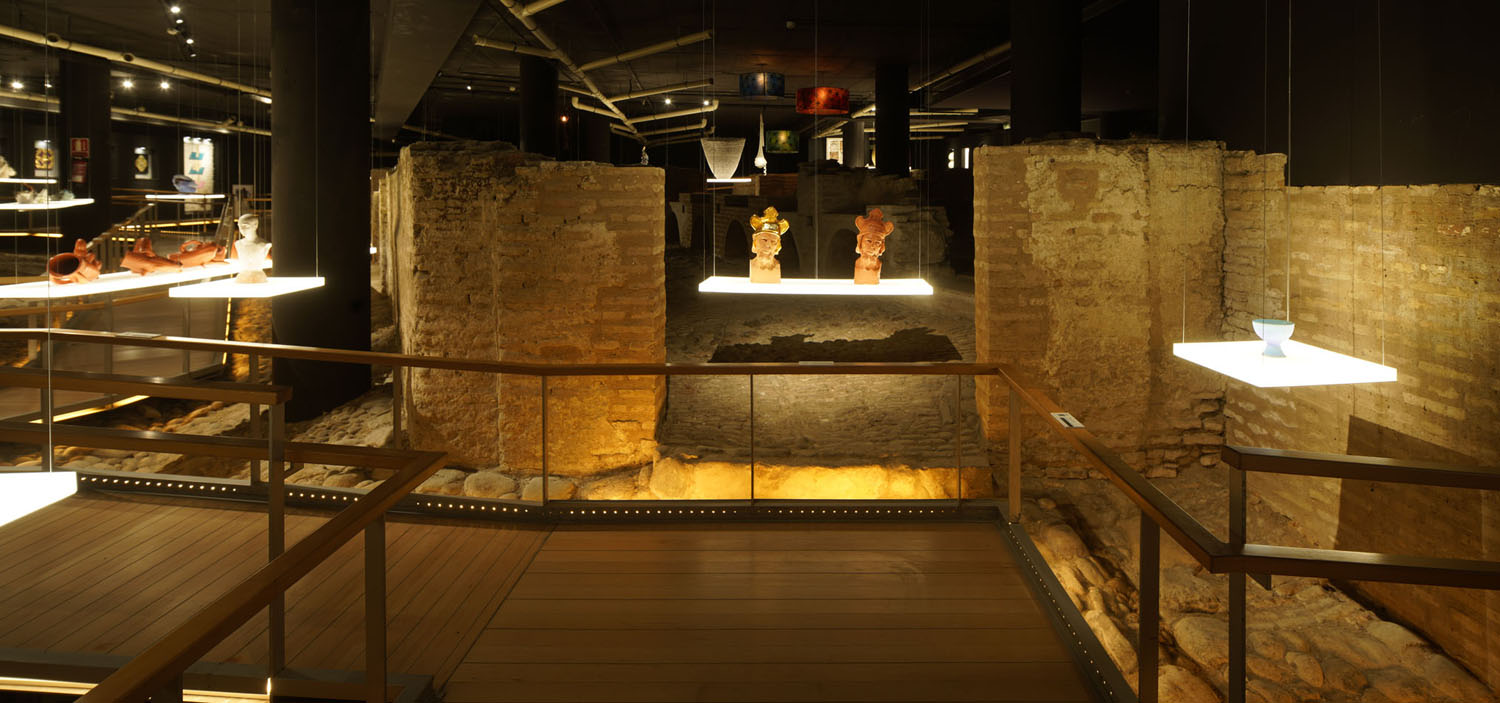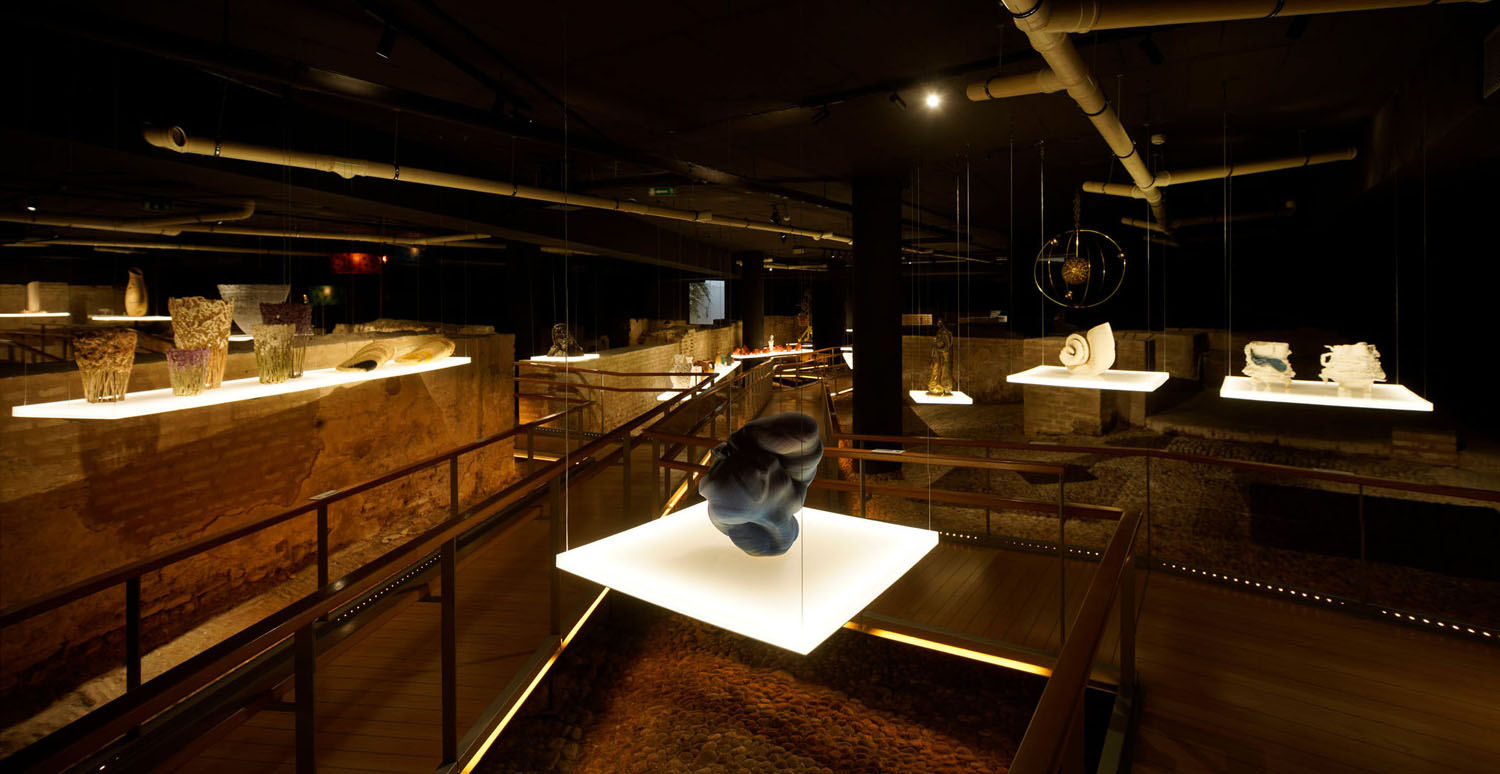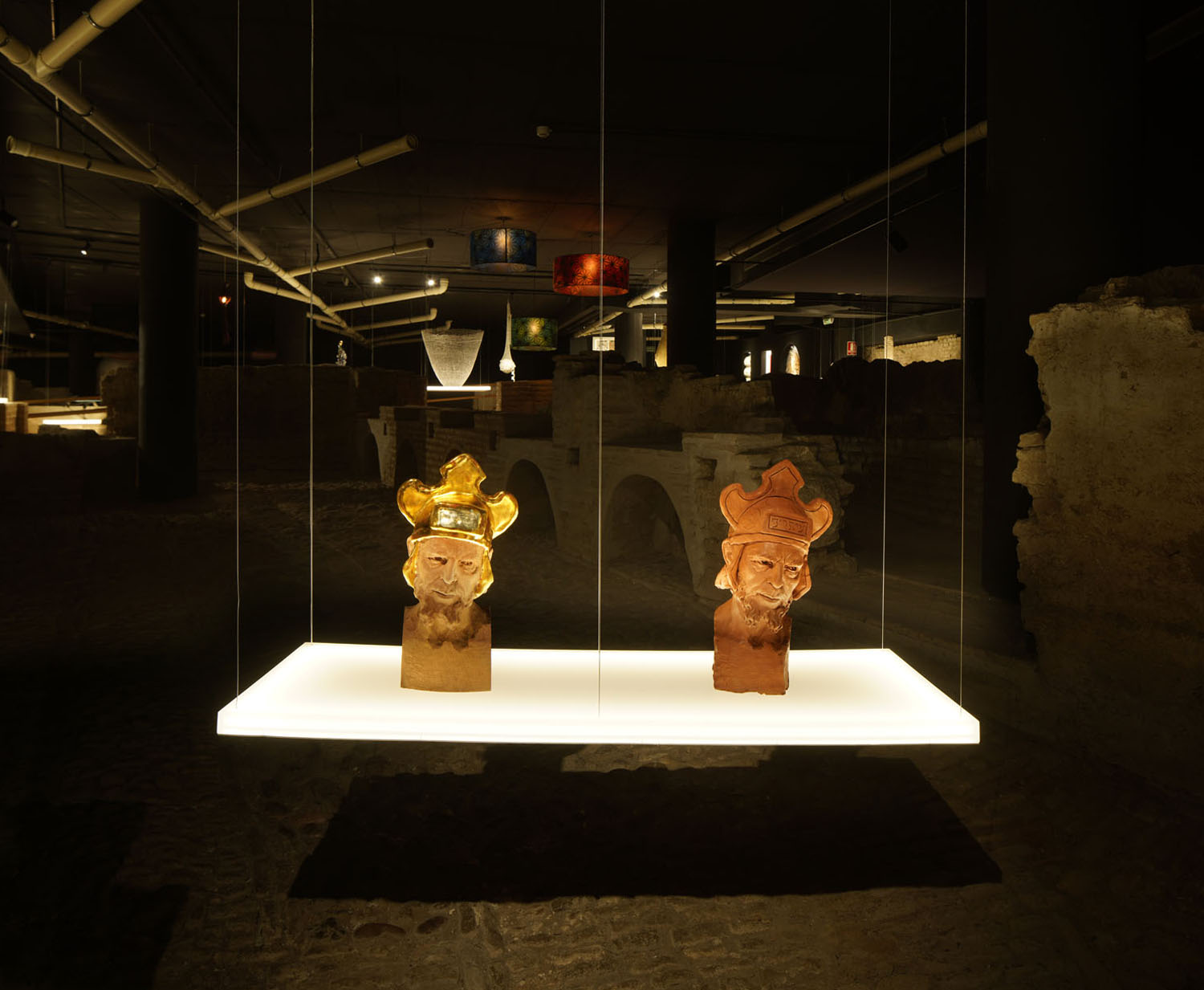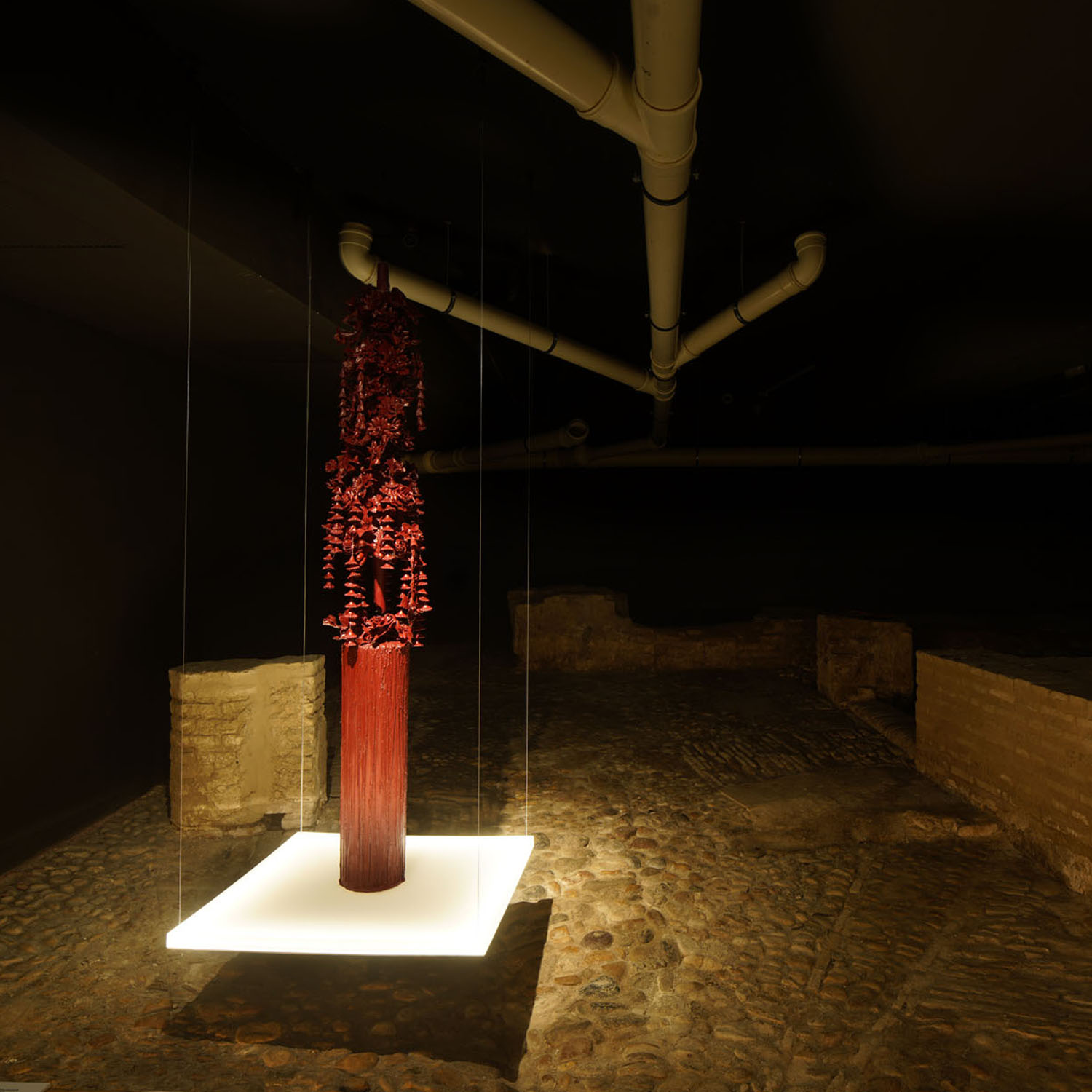Year of construction: 2023
Year of project: 2023
State: Built
Location: Altozano square, 16. 41010 Sevilla
Promoter: Ayuntamiento de Sevilla; Fundación Michelangelo homo faber; Ministerio de Cultura; Asociación contemporánea de Artes y Oficios
Architect: Pablo M. Millán Millán
Curators: Jean Blanchaert; Ramón Vergara
Contributors: David Vera García (Architect); Antonio Huertas Berro (Architect); Carmen Suárez Cortés (Architect); Alberto Anello (architect); Javier Serrano Sevilla (Technical architect)
Photographer: Javier Callejas Sevilla
When Saint Augustine in the Vulgate (Jn, 20, 17) speaks of the Noli me tangere, he recognizes two coinciding realities in the same space but with a different nature. With this expression, he shows the impossibility of interacting between them. One human nature, the other divine. But this does not prevent dialogue, quite the contrary, it encourages it in the face of each other’s need.
Under this premise of coexistence between two realities we propose the design of this exhibition. After choosing the patrimonial context of the Castle of San Jorge in Seville as the place to exhibit this sample of contemporary artisans, we demanded not to touch the ruins, only to observe them from the exhibition as a backdrop. The complexity of suspending the entire collection from the roof structure (current Triana market) made the intervention even more complex.
A space for dialogue is sought. It might seem like a contradiction that, in the remains of a castle from the Inquisition, there is an exhibition that encourages dialogue. Craftsmen and artists from different origins show their work in a permanent dialogue, not only with the material of the pieces created, but also with the container itself.
After wandering through the ruin, illuminated stones are suspended that will contain each of the precious pieces in the exhibition. These stones, almost weightless, will be the container and illuminating planes. Thus, the perfect geometry of precise pieces will be in charge of establishing a logic to the ruins, together with their qualification and integration.
After passing through the illuminated ruins with these perfect geometries, without being touched, the need for dialogue between the pieces themselves and the heritage in which they inhabit becomes clear.

